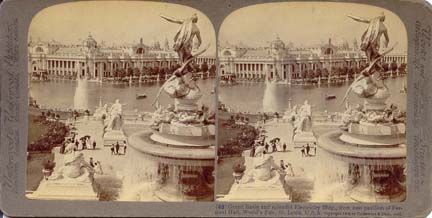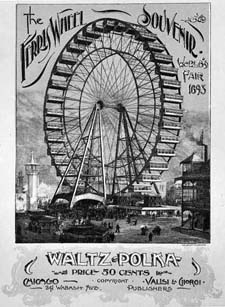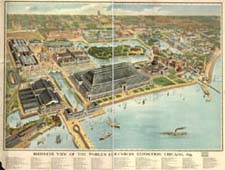

National Standards Geography Essential Element I. THE WORLD IN SPATIAL TERMS 1. How to use maps and other geographic representations, tools, and technologies to acquire, process, and report information from a spatial perspective. 2. How to use mental maps to organize information about people, places, and environments in a spatial context. 3. How to analyze the spatial organization of people, places, and environments on Earth's surface. Essential Element II. PLACES AND REGIONS 4. The physical and human characteristics of places. 5. That people create regions to interpret Earth's complexity. 6. How culture and experience influence people's perceptions of places and regions. Essential Element VI. THE USES OF GEOGRAPHY 17. How to apply geography to interpret he past. 18. How to apply geography to interpret the present and plan for the future. Socail Studies Culture: Social studies programs should include experiences that provide for the study of culture and cultural diversity. Time, Coninuity and Change: Social studies programs should include experiences that provide for the study of the ways human beings view themselves in and over time. People Places and Environments: Social studies programs should include experiences that provide for the study of people, places, and environments. |
Travel back prior to World War II to the heyday of fairs and expositions in America which awed millions of visitors with wondrous new inventions, exotic cultures, and amusements galore. Mingle with luminaries such as Helen Keller, Laura Ingalls Wilder, Theodore Roosevelt, and Alexander Graham Bell. Discover the thrill of the Ferris wheel, the delicious taste of the ice cream cone filled with your favorite flavor, and a radio with pictures—all introduced to the public for the first time through these venues. Although many of the buildings are gone, you can still explore the sights and sounds through photographs, artifacts, sound recordings, and motion pictures that have been preserved and made available through modern technology. A Treasury of World's Fair Art & Architecture The Architecture Library at the University of Maryland, College Park has a fabulous collection of materials related to world's fairs. In each of the online exhibits are wonderful graphics supplemented with rich, detailed descriptions and quotes from contemporary magazines and newspapers. This Web site is a good starting point for a research project. Trans-Mississippi and International Exposition (1898) The Trans-Mississippi International Exposition showcased the economic progress of the West from the Mississippi to the Pacific. The concurrent Indian Congress brought together 35 tribes that were to demonstrate their mode of living and work. F. A. Rinehart, the official photographer and only person permitted to take pictures, documented the exposition. Click on Visit the F. A. Rinehart Photo Gallery to view these photographs. Meet the architects and check the calendar for daily happenings. Rounding out the information on the site is a map of the fair grounds divided into areas for easy navigation. Visit the Colombian Exhibition, also known as the Chicago World's Fair of 1893, on the shores of Lake Michigan. You will be one of 27 million visitors who celebrated the 400th anniversary of Columbus's journey to America. The fair was touted as the greatest cultural and entertainment event in the history of the world and provided a venue to promote products such as Juicy Fruit Gum, ragtime music, and Quaker Oats. While strolling down the midway, quench your thirst with the newest drinks in town, carbonated beverages. Be sure to visit Machinery Hall, where you can see Eli Whitney's cotton gin, the latest sewing machines, and the world's largest conveyer belt. Don't miss Buffalo Bill's Wild West Show accompanied by contemporary illustrations of the event. Read about the reactions of fairgoers and the legacy it left for America. After completing your virtual tour, you should have some measure of the progress made up to 1893 and a better understanding of the political and social climate of the period.. Celebrating the Louisiana Purchase (1904) The scene is set, you've traveled many miles, and now you're ready to enter the front gate of the St. Louis World's fair. Grand examples of souvenirs, exhibits, costumes, and advertising are wonderfully arranged in a variety of categories such as Meals and Lodging; People Dress, and Customs; and Innovations on Display. Primary sources and artifacts from the fair combined with snippets of information make this site appealing for all ages. Photographs and descriptive narratives on this Web site are culled from The Greatest of Expositions: Completely Illustrated, published in 1904 by the Samuel F. Myerson Printing Company, St. Louis, Missouri. As a virtual traveler, you can relax and view the magnificent palaces built in a variety of architectural styles, read about the exhibits, and listen to lively ragtime music of the era like the "Palm Leaf Rag" by Scott Joplin. Pan-American Exposition (1901) Peruse the personal accounts and stories of those who attended the 1901 Pan-American Exhibition in Buffalo, New York. View a menu from a favorite fair restaurant or examine a map with all of the exhibits. Souvenir trading cards provided to fair goers were a big hit. See if you recognize any of the names of food manufacturers. In addition, there are primary source documents that include books on art, architecture, music, science, and technology. One article features a photograph of Thomas Edison visiting the exhibition and his interview regarding electricity. Innovations related to health and medical aspects of the fair include the baby incubator and the emergency hospital. The editorial in the Boston Medical and Surgical Journal of July 18 and 25, 1901, is most fascinating. This site allows the reader to experience the Buffalo Pan-American Exposition through rich and varied primary resources—a must-visit for any history buff Panama Pacific International Exposition (1915-1916) Seventy-six city blocks were cleared in San Francisco to celebrate the completion of the Panama Canal and to commemorate the 400th anniversary of Balboa's discovery of the Pacific Ocean. This site offers a view of events through artifacts that include medals, watch fobs, replicas of the Tower of Jewels (the largest building at the fair), pocketknives, and pennants. The ever-popular Laura Ingalls Wilder, who attended the fair while visiting her daughter, presents another perspective of the fair. She writes vivid descriptions of the attractions in letters mailed home to her husband. Glass negatives of the entertainment and fair goers are displayed in the image gallery. There are even 3-D photos with instructions on how to acquire 3-D glasses. Read about the awards given to exhibitors at the fair and why they were so prized. Finally, what would a fair be if recipes were not tried and shared? Try preparing one from L.L. McLaren's official fair cookbook. Panama-California Exposition, San Diego 1915-1916 Take a postcard tour of the San Diego Panama-California Exposition of 1915-1916 from the groundbreaking ceremonies of 1911 to the restored buildings that remain today. Read how "East Meets West in Balboa Park," included in the history of the exposition written by Richard Amero. This site contains a vast collection of stereo cards with photos of San Diego during the exposition. The cards provide a 3-D effect to the images. Don't miss the film clips of Theodore Roosevelt and his wife mingling with the crowds while visiting the fair. There is also a movie with a panorama of the exhibition, close ups of the attractions, and the cost of construction. Read how weather had a major impact on the festivities during the first 3 months. Finally, see what lasting effects the exhibition had on the quality of life in San Diego. The Chicago Historical Society has organized a brief overview of the Century of Progress fair held in Chicago from 1933-1934. Featured are photographs of events and exhibition halls, artifacts such as tickets and souvenirs, and a selected list of books. Images from the 1939 NY World's Fair (1939-1940) Sit back, relax, and explore the 1939 New York World's Fair through a series of slide shows. Postcards, advertisements, comics, and posters will delight the 21st-century sightseer and the art deco fan. Follow the Middleton family through the Westinghouse exhibit and meet Elektro, the amazing Westinghouse Moto-Man. Links to other online resources are also listed. Lifetime Memory Ticket to the Colombian Exposition—50 cents Overnight stay at the Pan-American Exposition—$1 Lunch at the New York World's Fair—$2.50 Souvenir photograph of Grandma and her parents on the Ferris wheel—priceless
|
|
||
|
||||



